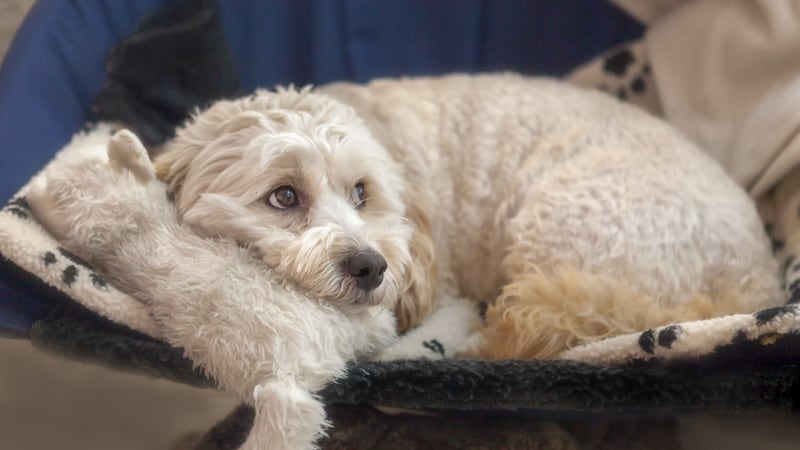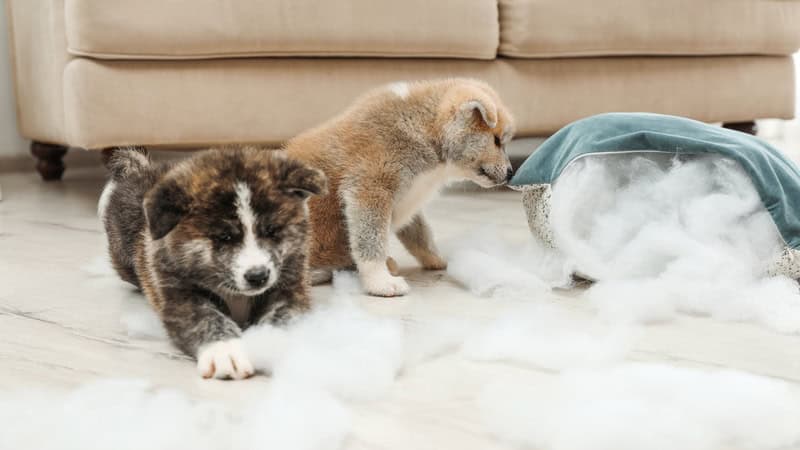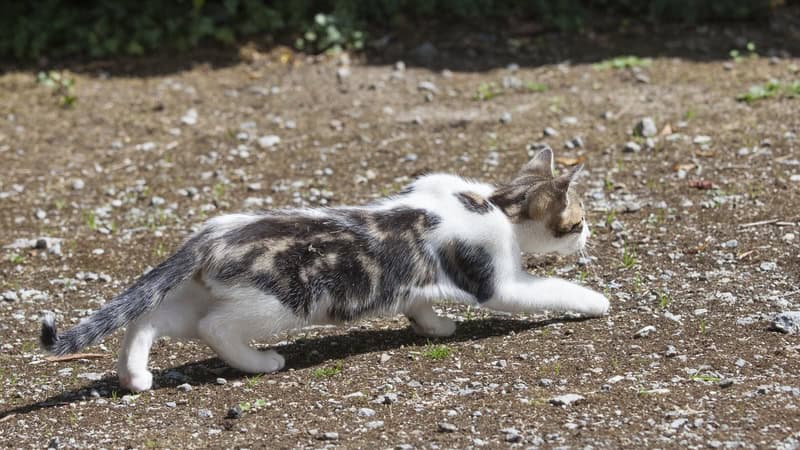Dog’s Bizarre Behavior Has Pet Owner Scratching Her Head
Plus ideas introducing a feral cat to other household cats

In this edition of “My Pet World,” pet advisor Cathy M. Rosenthal addresses a rescued dog’s bizarre behavior as well as a feral cat who has not been accepted by one of her housemates.
Dear Cathy,
I adopted a “maltipoo” who was abandoned at 3 weeks old in a box in a grocery store parking lot. Sometimes when she is napping and sometimes when she is resting, but wide awake, she will start to growl and show her teeth. Then she runs around in a circle chasing her tail. It appears violent and is scary to watch. Otherwise, she is very loving and kisses all dogs she meets at the dog park. My vet said he’s never heard of such behavior. One assistant of a vet thought it was an OCD (obsessive compulsive disorder) behavior. I need your help.
– Margaret, Las Vegas, Nevada
Dear Margaret,
When you said this happens while sleeping, I thought she could be dreaming – or having a seizure. But since this is happening while awake, I am unsure what to think without more information. Over the next few weeks, take note of when these things happen and what happens immediately before and after these episodes.
For example, is she growling, showing her teeth, and chasing her tail immediately upon waking – or is there no connection there? Does she exhibit any sort of catatonic-like behavior right before or after these episodes? Is there anything you can do to snap her out of this behavior or is she locked into it until she just suddenly stops? Does she do this before or after eating? If you can catch any of this on video, that can also help your veterinarian determine what is happening.
While it could be a compulsive behavior, it also could be medical. I know this response is not immediately helpful, but your veterinarian must rule out a health problem first. It could be something neurological, which can be very difficult to diagnose. If she has a clean bill of health, consult a veterinary behaviorist or dog behaviorist to see if you can get any final answers.
In the end though, if the behavior is not related to a health problem or causes no harm to her or another person or animal, then it may be just a behavior that is part of her make–up, and one you will need to adjust to having in the house.
A heartwarming tale of two adopted dogs
Dear Cathy,
Back in February, we took a feral cat into our house and domesticated her. She was always friendly with one of our cats. She doesn’t particularly like our dog, but she puts up with him. But she and our other cat don’t get along at all. When our cat chases her, she hisses. Our cat has injured her on a few occasions. We keep them separated by a gate. The feral cat now lives upstairs and our cat downstairs. Is there any way of getting these two cats to a point of not fighting and living peacefully?
– Steven, East Meadow, New York
Dear Steven,
Cats are territorial and so whenever a new one is brought into a home, the resident cats and new cat have to reestablish territories. This often involves hissing and chasing, which is normal, but when it results in physical injuries that is cause for concern.
I don’t know how you introduced the cats, but since one is upstairs and one is downstairs, it’s not too late to start over. Leave them on their respective floors and begin swapping their bedding so they can get to know each other via scent. After about a week, take the cats and switch places: the feral cat on the bottom floor and your other cat on the top floor. They will likely hiss and look unhappy, but these scent exchanges are vital to helping your felines adjust to each other. Only switch for a few hours and then return them to their respective floors.
During this time, put feline pheromone collars on every feline in your home and place plug-in pheromones on each floor. (If you can only afford one pheromone option, go with the collars.) The pheromones will provide a calming scent that will ultimately become the unifying scent for these kitties.
When the cats can smell each other’s bedding or be in each other’s space without hissing and spitting, then you can let them see each other through a baby gate. When that novelty wears off and they aren’t reacting anymore to each other, you can remove the gate. At this point, they will likely stay in their respective territories and hopefully, at best, will leave each other alone.
Be patient, protect the new cat from potential injury, and scent swap like crazy until they are comfortable with each other.
Cathy M. Rosenthal is a longtime animal advocate, author, columnist, and pet expert who has more than 25 years in the animal welfare field. Send your pet questions, stories, and tips to cathy@petpundit.com. Please include your name, city, and state. You can follow her @cathymrosenthal.
© Tribune Content Agency, LLC
Boomer has vetted all products recommended in Pet World articles, so you don’t have to! As an Amazon Associate, Boomer Magazine earns from qualifying purchases of linked products.


